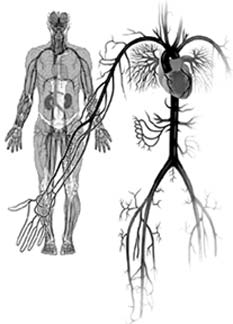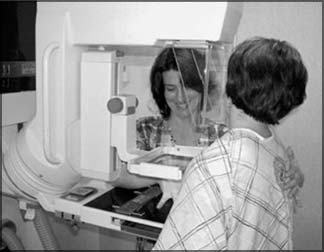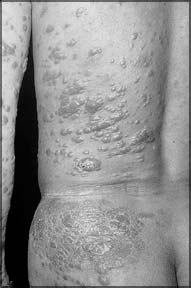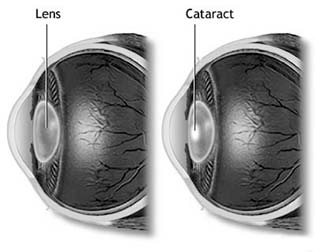Health wise
Vascular disorders preventable
By Samangie WETTIMUNY
 |
|
Dr. C. Sivathasan |
Dr. C. Sivathasan, Consultant cardio thoracic surgeon of the Heart
and Vascular Surgical Centre of Mount Elizabeth Hospital and Gleneagles
Hospital ,Singapore , briefed the media on 'Heart and Vascular diseases
and preventive measures' at a recent medical discussion held in Colombo.
Excerpts:
Heart diseases that are prevalent in Sri Lanka can be categorised
into three groups. Chronic , rheumatic heart diseases and
congenital/birth defects. In most developed countries (even in Sri
Lanka) the number of rheumatic heart diseases are on the decline.
Rheumatic heart disease which normally affects children within the age
group of 10 -12, is widespread among those who live in overcrowded
cities with poor housing facilities. It causes inflammation of heart
valves damaging them in the long run, which would require treatment.
Congenital diseases:- Hole in the heart; blue babies
Coronary artery disease is the commonest heart disease that occurs in
adults (45-50 and above). It is a condition in which plaque
(cholesterol, calcium) builds up inside the coronary arteries. The
causes that lead to coronary heart disease can be grouped into two as
modifiable factors and factors that cannot be modified. Coronary heart
diseases that occur due to modifiable factors are also called
lifestyle-related heart diseases,which are overweight, unhealthy diet,
smoking, high blood pressure, uncontrolled diabetes and physical
inactivity. If people take care of themselves, all these factors could
be avoided. Factors that cannot be modified include family history, old
age, males (Heart diseases are more common in males), females vulnerable
after menopause Protected by hormones, and become vulnerable after
menopause.)
Vascular diseases
Vascular diseases are conditions that affect the blood
vessels-arteries and veins that carry blood to and fro all parts of the
body. The same factors that cause heart diseases lead to vascular
diseases. Vascular disease affecting the arteries is called arterial
disease. Vascular conditions that affect veins are called venous
diseases. Arterial disease could occur either due to narrowing of the
artery (occlusive disease) or due to the enlargement of an artery
(aneurysm disease).
 With time, cholesterol may get deposited in the blood vessel wall ,
narrowing the artery which would in turn interfere with smooth blood
circulation. With time, cholesterol may get deposited in the blood vessel wall ,
narrowing the artery which would in turn interfere with smooth blood
circulation.
For example when Carotid artery which supplies blood to the head and
neck with oxygenated blood gets narrowed , blood circulation to brain
may get blocked.It is called carotid stenosis.Carotid artery stenosis is
caused by hypercholesterolemia (too much of cholesterol in the blood.)
Lack of blood supply to the brain may lead to a stroke. This could be
either due to a rupture(bursting of a blood vessel) or due to a
blockage. Uncontrolled blood pressure may ultimately lead to bursting of
a blood vessel in brain which would cause bleeding into the brain
resulting in a stroke. In extreme cases patients can even go into a
coma. If the bleeding is massive it could be fatal. If the stroke is on
the right side of your brain, reactions may arise on the left side of
the body and vice versa.
Carotid artery stenosis often goes undetected for a while as no
symptoms show on some of the affected individuals. But for others , the
same signs of stroke can be observed.
Signs
1.Sudden weakness or even paralysis of a leg, arm or hand
2.Transient blindness or severe blurring of vision.
3.Transient slurring, garbled or inappropriate speech
4.Transient one-sided facial droop
5.Blackouts, spells and severe headache
"Unfortunately people tend to ignore the symptoms until they reach a
critical stage. Though people are highly concerned about heart diseases,
they do not seem to pay similar type of caution to vascular diseases. By
the time they consult a doctor their condition would have turned for the
worse."
People who are more prone to this disease should be more cautious of
the type of food they eat. It is advisable for them to maintain a diet
that is low in cholesterol, but high in nutrition. Blood pressure of a
person susceptible to carotid artery stenosis should be monitored and
controlled at all times. Smoking and alcohol consumption should be
reduced, if not stopped completely. Diabetes should be controlled and
treated accordingly.
Treatment of Carotid artery stenosis:
Carotid edarterectomy: The procedure is performed by surgically
removing the plaque or the build up that is causing the narrowing of the
artery.The surgery is performed only on patients whose arteries have
narrowed by as much as 70% or higher.If it is just 50% or less
medications may be prescribed.
Angioplasty: stretching the artery where it has narrowed with a
balloon
Peripheral vascular diseases
Peripheral vascular diseases are complications in blood vessels
outside the heart and brain. It is often a narrowing of a vessel that
carry blood to legs, arms , stomach and kidneys. Peripheral artery
disease can cause claudication- narrowing or blockage in the main artery
taking blood to one's legs.
Femoral artery is the main blood vessel in the thigh that carries
blood and oxygen to the legs and when it is blocked the blood flow in
the leg region is reduced.
Claudication is preventable. It occurs much early in life in people
who smoke and those who have diabetes, high blood pressure or high
levels of cholesterol in the system. There are three approaches to
treating claudication:exercise, angioplasty or a bypass surgery.
"People usually tend to ignore diseases in the legs. Sometimes people
who have diabetes may not feel any pain even if they have wounds on
their legs, whereby in the end it will lead to leg amputation."
In certain remote areas in Sri Lanka people are addicted to 'beedi',
and it causes much more harm to vessels in the leg than anyone could
imagine.
Patients, specially diabetics are advised to attend diabetic foot
clinics regularly so that preventive measures could be taken.
Prevention of breast cancer
Is routine mammography helpful:
Doctors often advise women with genetic risk and family history of
breast cancer to get mammography, especially for those who are positive
for B R C A genes. It should be noted that undergoing tests such as
mammography and genetic tests does not appear to help in the prevention
of breast cancer.
 It is noteworthy that mammography helps the doctor to diagnose breast
cancer in the early stages of the cancer; doing mammogram does not help
doctors to diagnose the breast cancer before the cancer has started
growing. It is noteworthy that mammography helps the doctor to diagnose breast
cancer in the early stages of the cancer; doing mammogram does not help
doctors to diagnose the breast cancer before the cancer has started
growing.
If breast cancer is detected in the early stages, results of surgery
i.e. mastectomy are better and a significant number of these patients
can live five years, whereas if the cancer is detected after it has
spread to surrounding tissues, results of surgery are not all that good.
Management of high risk patients
There are four options for the management of those women with family
history of breast cancer and are positive for B R C A genes.
1. Watch and wait.
2. Take oestrogen lowering drug tamoxifen for rest of their lives.
Tamoxifen has various side-effects such as stroke, cataracts, deep vein
thrombosis, uterine cancer and pulmonary embolism.
3. Undergoing mastectomy (surgical removal of breasts).
4. Nutritional approach i.e. consuming a diet free of animal-based
foods and low in refined carbohydrates aided by regular monitoring of
those at high risk. Internationally famous nutritionist T. Collin
Campbell PhD says "I stand by the usefulness of the fourth option even
for women who have already had a first mastectomy".
It is noteworthy that diet is an effective treatment of
already-diagnosed disease with advanced heart disease (Ornish D etal,
JAMA, 280, 1998, 2001-2007), liver cancer, and melanoma, and clinically
documented Type II Diabetes.
Dr. D. P. Athukorale
Over 2000 leprosy patients treated annually
International Leprosy Day falls today:
by Harshini PERERA
Even though Sri Lanka has declared the elimination of leprosy in
1954, a number of patients are still being found in Sri Lanka. The
reason behind it is the fact that it has a long incubation period.
Therefore, symptoms are understood quite later than other diseases.
International Leprosy Day falls on January 25 each year, and recalls our
memory of this slowly progressive disease.
 Leprosy is a skin disease widely known as the oldest which even bear
biblical references and is caused by a bacteria identified as
"Mycobacterium leprae." Leprosy is understood by its two types; Pauci
Bacilary Leprosy (Non-transmittable) and Multi Bacilary Leprosy
(Transmittable). Leprosy is a disease generally transmitted through the
respiratory system. Consequently, sneezing or coughing of an infected
person with a transmissible leprosy can only transmit the disease. It
generally has an incubation period ranging from three months to 20
years. Leprosy is a skin disease widely known as the oldest which even bear
biblical references and is caused by a bacteria identified as
"Mycobacterium leprae." Leprosy is understood by its two types; Pauci
Bacilary Leprosy (Non-transmittable) and Multi Bacilary Leprosy
(Transmittable). Leprosy is a disease generally transmitted through the
respiratory system. Consequently, sneezing or coughing of an infected
person with a transmissible leprosy can only transmit the disease. It
generally has an incubation period ranging from three months to 20
years.
Senseless lesions (abnormality of the tissues of the skin) is the
first symptom of the disease. They can be light or bronze in colour but
can be senseless. Moreover, if lesions appearing are less than five in
number it is identified as non-transmissible while more than five
lesions are considered transmissible. This bacteria can directly affect
the immune system and as a result of it one's sensory system can be
damaged. When the immune system malfunctions, his sensory system
invariably goes senseless. Therefore, he may not feel getting injured.
In such a state one could get wounds similar to that of created by
diabetes. Considerable amount of people can be subjected to deformations
of limbs and hands when the disease is spread across the immune system.
Number of patients recorded means the disease is not hidden any longer
where around 2000 patients were found in 2007.
Large number of patients were recorded in the Western Province (44%)
and 14% were recorded in Eastern Province. Leprosy, none other than the
misconceptions towards it, has submerged the disease, but fortunately a
change in the number of patients is recorded after the Multi-Medication
Campaign which was started in 1983. In the year of 2001 treatment for
leprosy was interlinked with normal channelled services in hospitals.
That enabled more patients to come out of their fears and get treated.
The population density and availability of facilities in the Western
Province have reported a large number of patients compared with other
districts. That does not mean that other districts are less in numbers.
People usually hesitate to get medicine for leprosy due to the attitude
the society towards the disease.
Even though other countries show a steep decline in number of
patients recorded, since its incubation period is long, Sri Lanka may
have to tackle leprosy for many more years.
Leprosy is a curable disease which has to be treated at its early
stage. There are two different medications for both transmittable and
non-transmittaible leprosy. Depending on its type, medication is
directed for six months as well as 12 months. A patient, who is
undergoing medication, could not transmit the disease to a healthy
person.
Ninety percent who undergo medication will not get any side-effect
while others may have discoloured skin, eyes and urine turn yellowish
while some may suffer from a slight fever and symptoms of hepatitis due
to the effect the medicine does to the kidneys. Deformation of the body
can be prevented on early detection. If not daily exercise and medical
surgery can take them into normalcy.
There is no need to keep them separated in leper colonies. For
example Leprosy Hospital in Hendala. People who do have strong immune
reaction to the disease would not entertain it while only 10% of the
entire population can be affected by leprosy. Once they are treated,
society should accept them as normal human beings and should remember
that leprosy is an ordinary disease which can be eliminated. Statistics
show that before 1990 there were only 1000 new cases detected while 2500
patients were recorded from 1990-1994. The number of patients detected
in 1995-2000 were only 2000. It further states that each year around
2000 patients were found with leprosy from entire Sri Lanka.
Tips for patients seeking cataract surgery
Presently in Sri Lanka, the patient needs to purchase the
intra-ocular lens.
The model and price of each lens (CDDA approved) is quoted below.
Foldable lens for cataract surgery
 . Alcon (USA) . Alcon (USA)
Acrysof single piece SA 60 AT
Rs. 11,900.00
Acrysof IQ SN 60 WF Rs. 15,300.00
Acrysof Toric SN 60 T3 Rs. 48,000.00
Acrysof Restor SN 6 AD3 Rs. 71,000.00
. AMO (USA)
Sensar (AR 40e) Rs. 11,900.00
Tecnis (ZA 9003) Rs. 15,900.00
. Bausch & Lomb (USA)
Akreos (adapt) Rs. 11,900.00
Akreos (AO - Zero aberration)
Rs. 15,900.00
. Aurolab (Indian) Rs. 5,000.00
. Omni (Indian) Rs. 7,000.00
. Appasamy (Indian) Rs. 6,600.00
Non foldable lenses
. Alcon (USA)
PMMA MC 50BD Rs. 4,500.00
. AMO (USA)
Dura (65T) - PMMA large optic Rs. 4,900.00
Dura (53) - PMMA small optic
Rs. 4,900.00
Eyekon (USA) Rs. 4,900.00
Omni (Indian) Rs. 1,000.00
Curamed (Netherlands) Rs. 4,500.00
Raiyan
Rs. 1,000.00
Katriol (Indian) Rs. 750.00
Fred Hollows (Indian) Rs. 1,000.00
Aurolab (Indian) Rs. 1,000.00
Visiflex (Indian) Rs. 750.00
Appasamy - Liberty (Indian)
Rs. 3,250.00
Appa lens Rs. 1,000.00
The patient is advised to pay the amount stated above for lens of
his/her choice.
Further the patient is advised not to purchase a non CDDA approved
lens some of which are marked up at over 300% of its true value.
The prices quoted are correct at the moment but may vary and be
revised with change of the US Dollar and the Indian Rupee.
Finally I would like to state that 30 intra-ocular lenses are
supplied free to each Ophthalmologist in the Provincial hospitals by the
Sri Lanka Eye Foundation. You may inquire from your surgeons about this
lens implant.
-Dr. C. R. Seimon, MBBS (Cey), DO (Lond), FRCS (Eng), FR Cophth (UK)
Chairman, Sri Lanka Eye Foundation and Consultant Ophthalmologist. |

